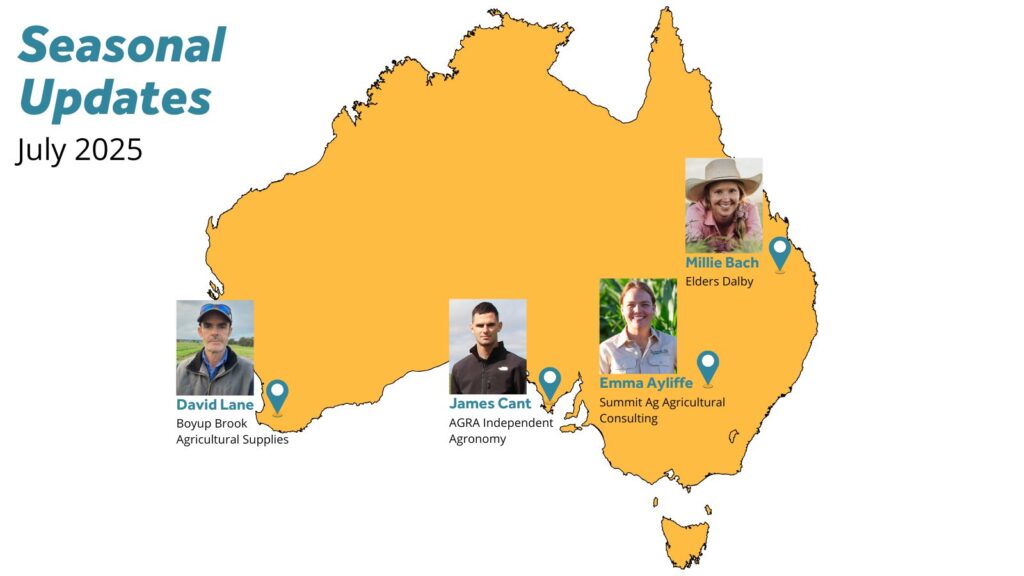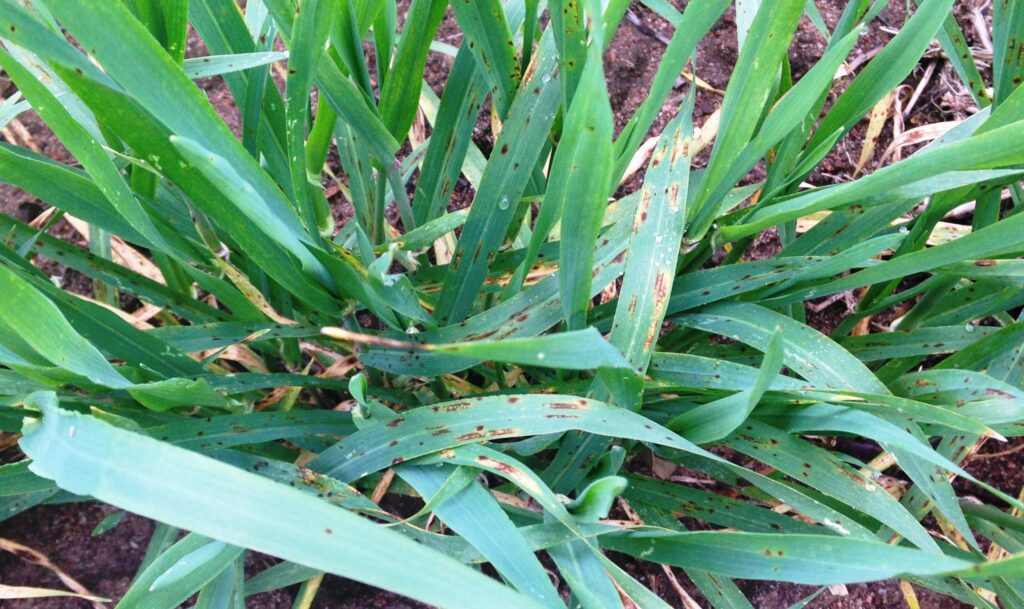As one of our agronomists put it: the start to the season around Australia is a story of ‘haves’ and ‘have-nots’. So what’s going on in each region, and what to look out for?
Four agronomists give us their point of view on the current issues of the season and what growers can be considering: Emma Ayliffe (NSW), Millie Bach (Qld), David Lane (WA) and James Cant (SA).
Emma Ayliffe, Summit Ag Agricultural Consulting, Condobolin and Lake Cargelligo (NSW)
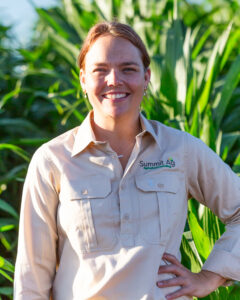
Emma says that for those that got an early break, disease pressure is fairly low, and very minimal disease pressure for the late sown crops too.
“We had a very dry January, February, March – I think we measured about 40 mm of rainfall for the whole summer. So it’s basically been no green bridge and therefore very low disease pressure.” Those that have mixed farming enterprises often pair their cropping with a lucerne pasture phase, she says, get that extra help with disease management.
For dryland cropping, Emma says the forecast disease burden will be entirely dependent on variety selection. “For anyone that grows something that’s a bit more susceptible, like a Scepter, which probably makes up about 55% of the area that I look after, that’ll be a pretty routine spray unless it’s exceptionally dry.”
The irrigators, she says, “will be pushing yields a fair bit harder, and run a relatively programmed spray approach regardless, but not necessarily targeting, say, rust. There’s underlying diseases such as powdery mildew, that tend to creep up on us.”
Emma says that “anything big canopy” will require a close watch. Growers are also aware that “higher nitrogen programs will push a variety’s disease rating back one step, that adult plant resistance may kick in later than we anticipate. Or if it’s highly like overcast for a long period of time, or the weather’s cooler than we traditionally experience, and the adult plant resistance genes kick in a little bit later.”
“I think we put a lot of focus on protecting the flag leaf, and sometimes we miss some early disease-management steps at that first node, late tiller stage, which gives us underlying background effects,” she says. “And when you couple that with a late kick-in from a resistance gene in a crop, it can be like ‘one plus one equals two’, but not in a good way.”
Emma recommends not being too frugal on early fungicides, which can give growers an early win in terms of keeping canopies clean. “Usually, we’re better off waiting till the back end, when we’ve got that APR kicking in, and making some dynamic decisions then.”
David Lane, Boyup Brook Agricultural Supplies, Brook area (WA)
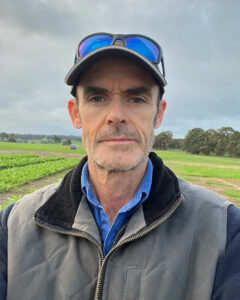
David cautions about how much rain will come for those croppers as to how the season will finish up. “May was a pretty dry start, so it’ll be interesting to see what it does for yields, because it’s pretty difficult to get the first lot of in-crop fertiliser on – that probably went on three weeks late. Then, there was no soil moisture at all, and no appropriate weather for spreading fertiliser.”
However, he said a saving grace are the daytime temperatures: “We’re sort of still 17, 18, 19 degrees around home today, which is pretty unusual. Normally July’s about 11 or 12 degrees. So things are still growing and pushing through really well.”
“But if it continues as it has been in the last three, four years, with early finishes, it’s looking pretty good for those who planted early, and made the most out of that early subsoil moisture.”
David says that in his area, most people are looking out for the usual blackleg and sclerotinia – combating with Prosaro or the like; then Aviator or similar later.
Although cereal crops are “quite clean” so far, he said there may be a lot of disease pressure because of continued barley rotations – especially if it stays wet into spring, and the temperatures boost powdery mildew. “With growers taking Neo as their preferred barley this year, a lot of the net-spot-type blotches shouldn’t be as prevalent as they were with Planet.”
David is encouraging growers to look to prevention: “better than calling the fire brigade once the house is on fire,” depending on affordability. “Disease-wise for prevention, a few people are putting a bit of wheat into their rotations to try and get away from the canola–barley. Wheat is not a bad option where we are; there are a lot of oats in this year, as this is favourable margin-wise; and a little bit of lupins in that mix as well.”
Millie Bach, Elders Dalby, Darling Downs (Qld)
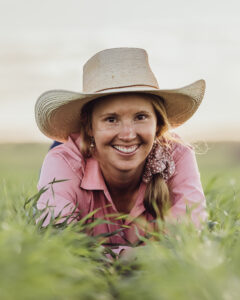
“We’ve had a fair bit of rain in between, which halted planting – it’s just been a bit hit and miss, a very spread-out season with some early barley, a few faba beans, small areas of canola and later chickpeas.”
Millie says another rainfall would be good soon, but as growers get to tillering, they’ll be looking to put some preventative fungicides out as they start to do herbicide in crops in wheat and barley off the back of higher disease loadings of the last few years.
Looking forward, Millie says the rainfall has left most people with full moisture profiles under anything that’s just been planted and sitting in a good position until they see what they get in July/August, the main growing window.
“And making sure we’re covering off on our disease, that is when we’ll really start to ramp up, once we’ve got a bit more of a canopy and it’s dependent on weather conditions and if we have a good finish to the season.”
“Yellow spot is one that we’ve seen in the last couple of years more in the Western Downs area, so we’re starting to see some of that again now. Crown rot will be another big one to watch out for, because we’ve had a fair bit of that the last couple of years and a good start with a hard finish always means crown rot can be bad at the other end.”
Millie is keen to recommend considering more effective fungicides where it won’t impact too much on return, to use the price drops to move from the most commonly used fungicides to those that have longer residual activity.
“It’s good to change up the chemistry a little bit to get control of disease early, because once you’re behind, it can be hard to control after that.”
James Cant, AGRA Independent Agronomy, Eyre Peninsula (SA)
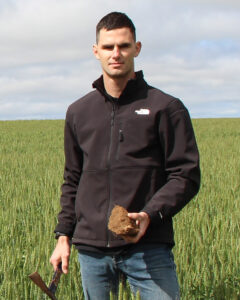
“There are some guys that got early rains – maybe 30% of the farmers I work with have wheat that’s just starting to tiller. For the rest, it’s really only come through in the last two weeks,” he says.
That means, for most, disease isn’t bearing down on them, “but we had no green bridge over summer – virtually no rain for nearly at least nine months.” This combined with the late start means small crop canopies so far, and no common winter diseases (such as septoria or powdery mildew).
Looking forward, James says rainfall is tracking under zero to one decile.
James’s gut feel “is that, in the current climate, there’s a really low risk this year. So most people now are doing reactive fungicide and disease management, which is also driven by the current financial landscape that farmers are dealing with. Last year was a tough season.”
In saying that, he reminds, there are still strategies and money that need to be spent – for instance, using the [seed treatment] Systiva SDHI fungicide on barley despite the extremely low disease pressure at the moment.
“But we know we’re going to have to follow up, regardless of the season, with another mode of action – most likely a DMI fungicide – purely to manage resistance and because that is best practice,” he says.
Unlike better years where growers could often link a well-timed fungicide with the broad leaf spray, this year has seen a lot of dry sowing, and broadleaf weeds coming up with the crop. “Growers should understand that it’s not a great time to be applying fungicides for most of our common winter and especially spring diseases. Of course, if conditions are conducive, there’s a probability that we’ll be coming back with a second application.”
Mark Gibberd, CCDM Director
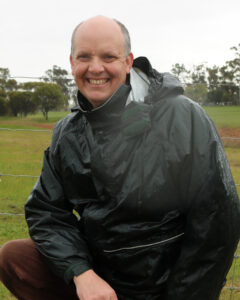
“A spread-out season can pose a significant challenge; a particular risk is the increased carryover of disease (from fallow areas or late-sown area) and a buildup of inoculum during the extended season,” said Mark.
Regular monitoring and early action is key for managing these issues, and growers are encouraged to think about paddock- and subpaddock-scale decisions about using fungicides.
Ultimately, growers need to strike a balance between managing disease pressure, maximising their yield potential, and protecting the longevity of fungicides regarding resistance. This will require considering integrated approaches and fungicide rotation.
“We highly encourage the move away from cheaper fungicides that lead to more widespread resistance,” Mark said. “If growers are still using Tebuconazole in areas such as the Darling Downs, we are likely to see a loss of efficacy of that chemistry into the future.”
This advice follows recommendations from the Australian Fungicide Resistance Extension Network, which has a suite of online resources and information for growers and agronomists.
Beyond fungicide choices, broader beneficial agronomic practices such as crop rotation can also play a key role in managing disease risk. In some regions, shortening rotations to favour stable, high-yielding crops will heighten the local disease pressure.
“Even if alternative crops are higher risk or lower return, their value as a disease break in the system could stack up, economically, over time,” Mark explained.
Although growers focus heavily on paddock profitability year-by-year, multi-year considerations are important for managing disease, insect and weed pressure, and pesticide resistance.
In addition to crop rotation, another valuable technique for disease management is the use of genetically resistant varieties – Mark said it was encouraging to see growers take up varieties with improved disease resistance, “like the uptake of Neo in Boyup Brook.”
New varieties can lay a strong foundation for disease management but will generate the best results long-term when growers support them with strategic fungicide use and the right agronomic controls to help alleviate disease pressure.
“These varieties can’t fight disease alone, so we have to be on top of applying fungicides strategically to reign in that disease pressure. Just as we want to protect the efficacy of our fungicides, we want to protect the genetics in these varieties for the long term.”
Links and resources:
- Check out the Australian Fungicide Resistance Extension Network website for resources on fungicide resistance.
- Get in touch with the fungicide resistance group if you see fungicide failure, to get some samples across for testing. Contact them at frg@curtin.edu.au



